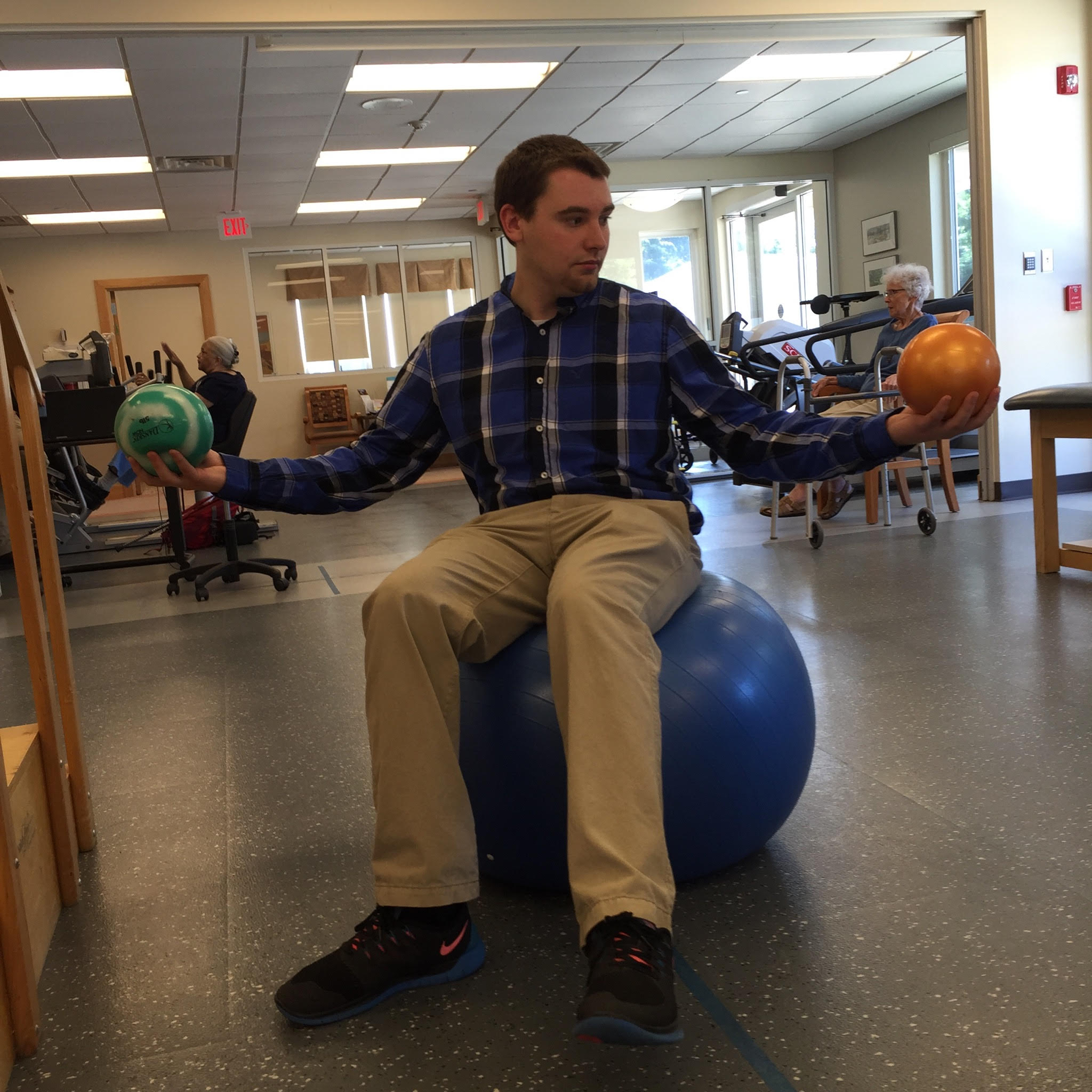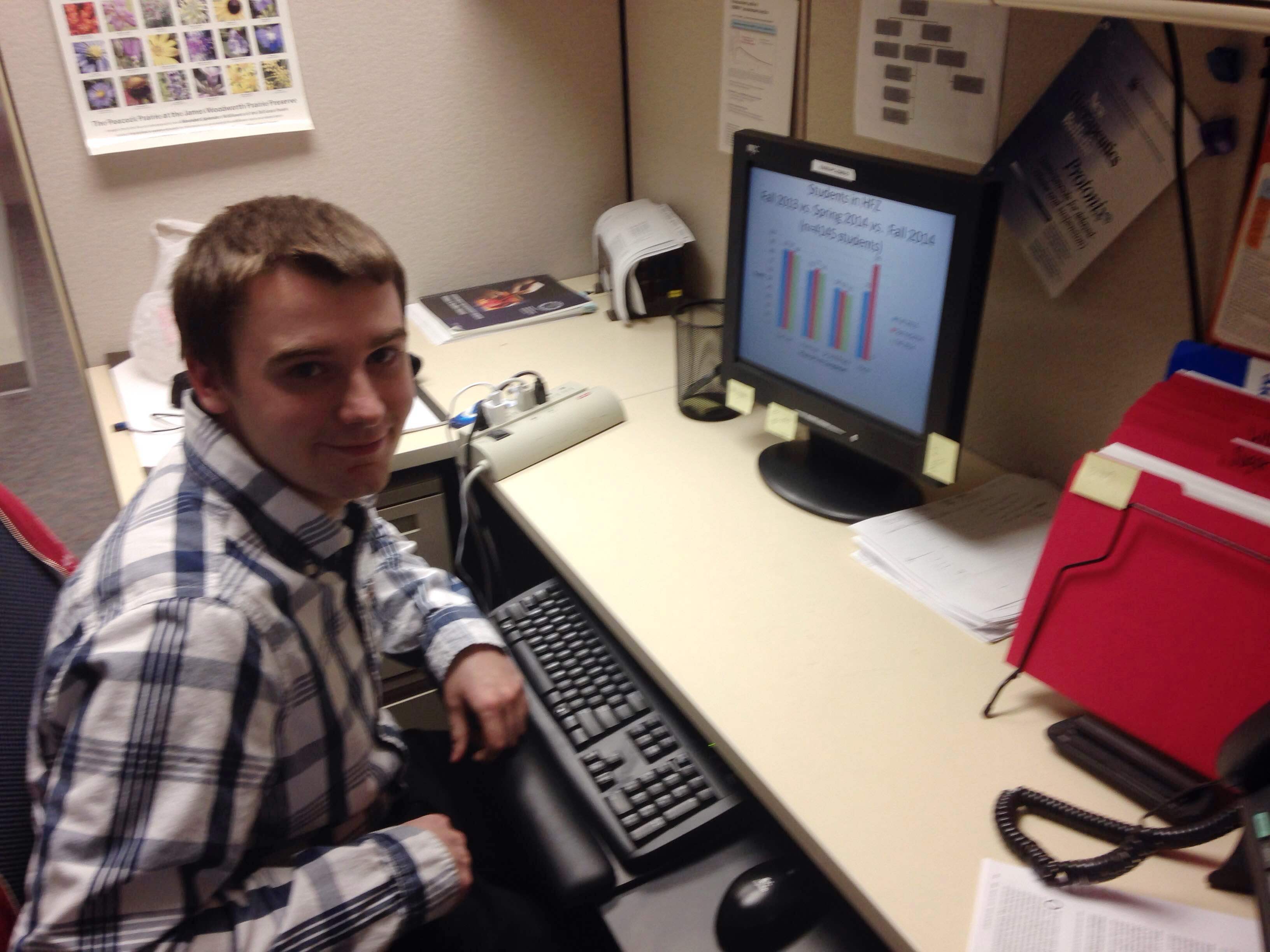My Final Co-op- Shadowing at Physical Therapy Clinics: Brimmeier ’17 at Kettering Health Network in Ohio
Aug 08, 2016It’s be a good place to start by saying my co-op is a little unorthodox from an Antioch student’s normal co-op, though, there is a reason I am doing this. My co-op is located all around Southwestern Ohio, as I shadow physical therapists around the area in order to gain 100 observation hours I need in order to meet graduate school requirements. This is unpaid, though, it is helping me get into my future career path. I want to be a physical therapist, and most graduate schools require anywhere from 80-100 hours of shadowing in order to get accepted to their program.
The first place I’m shadowing at is the Kettering Sports Medicine Center. By its name, one can assume it’s a rehabilitation center where athletes are treated for their injuries. Though, while they do specialize in rehabilitating athletes and bringing them back to their peak performance levels, most patients are just normal people who have had some kind of surgery. There are a lot of elderly patients who have just gone through a knee replacement, shoulder repair, or rotator cuff surgery. Many patients are there to deal with chronic back pain, or are strengthening their hips in order to regain lost range of motion because of pain hindering their movement. While this may not sound like the most exciting place in the world, it is very interesting to a bio-medical science major like myself. The human body rules here, and that’s what I love about physical therapy. It’s just as challenging as practicing medicine: one must diagnose, treat, and then reflect on progress as the treatment is ongoing.
My role in the workplace is really not significant, as I am just observing the physical therapist doing their job. I’ll describe here what they do, and how this relates to why I am doing it. As I mentioned earlier, their job is to diagnose patients with some kind of issue and then treat this issue by rehabbing their strength and range of motion. For example, knee replacements are probably the most frequent patients they see. They diagnose every week by assessing the progress they have made since their surgery. To put this in perspective, people heal at different rates. I have seen a man at 73 years old who is 3 weeks out of surgery and has nearly his full range of motion, with almost no loss of strength. On the other hand, I have seen patients around 60 years old who are 2 months out of surgery and are nowhere close to completing their treatment, with a lot of work to do in both range of motion and strength. It’s important to take note of this, as a treatment plan for someone almost healthy would not be the same as someone just starting to get better. One thing I’ve noticed is that keeping the patient informed, motivated, and in good spirits can actually accelerate their progress. It’s the physical therapists job to make sure they do their exercises at home in between appointments. To do this, you need to make sure that they know that if they don’t, it can stall their treatment, and even keep them from reaching their full potential.
Athletes are the same way, they must be motivated to get better. They sustain some of the most gruesome injuries, and thus the rehabilitation process can be long and painful. Though, they tend to work the hardest out of all the patients, as they know their career plans (or future career plans for younger athletes) depends on them to be at their physical peak. By keeping patients informed, it can make them more apt to work out and gain back their past abilities.
I also shadow at an assisted living facility in Yellow Spring, Ohio. Here patients are elderly, and many of them are wheelchair bound. This is due to years of deconditioning and muscle atrophy. The physical therapist I shadow there explains to me in as much detail what is possible for patients at this stage in their life. He uses as much medical terminology as possible to describe the problems many of the patients face. Some patients will be wheelchair bound for the rest of their lives, and thus they really only do rehab to keep their heart healthy. The patients usually just ride the exercise bikes for about half hour. Though, some patients are working towards larger goals such as walking again.
This co-op has taught me a lot of interesting things about physical therapy, and I am now sure it is the right career path for me. I’ve learned how to treat certain injuries, and have even got to put a lot of things I’ve learned throughout my science courses to work. By taking Anatomy and Physiology classes, I understand the medical terminology the physical therapists use and feel much more prepared for entering graduate school. Physical therapy is an important growing field, especially as the baby boomer generation is aging and scholastic sports are becoming more popular activities for children and adolescents. Also, I’ve learned how important doctor-patient interactions are in order to make the patient understand their injury, and also understand why a certain treatment plan should improve their symptoms. This co-op has been a truly eye opening experience, and has solidified many questions I had concerning the field of physical therapy. These shadowing experiences have helped prepare me for physical therapy school, and I feel much more prepared for the new information I will encounter there. The learning that has taken place over this co-op will be useful to help me succeed in graduate school, and eventually earn my doctorate in physical therapy.
The Importance of Good Data: Brimmeier ’17 at Northshore University Health System in Chicago, Illinois
Feb 09, 2016My Chicago Co-op
My co-op position is a research assistant at the Northshore University Health System. Northshore is a rather large company with many hospitals dedicated to creating a healthier world. Its main goals are to provide the absolute best care to their patients and make the world healthier, which is accomplished through projects. I work with Dr. Sanborn, a cardiologist here at the hospital. Besides caring for patients, he works on many different studies and research projects. There are 3 projects he is currently working on: Fitnessgram, Sugar Show, and Tobacco 21 Initiative. I assist in each one, helping in different ways. I will explain how these studies work, their goals, and how I assist them.
Fitnessgram is a project that has just recently made a difference in the Evanston, IL community. Fitnessgram is a program schools use to evaluate students, placing them in different fitness categories in order to make them healthier. The goal of the program is to lower BMI and increase health through physical activity. It uses BMI and some physical fitness activities (sit ups, pushups, etc.) to place these students in what is called a “Healthy Fitness Zone”. Based on what zone a child falls into determines if they are physically fit. This study has provided Evanston with unprecedented results! It has dropped the obesity rate in Evanston middle school children by nearly 10%. The obesity rate for children in Evanston has fallen 6% below the national obesity rate (which is 20%). District 65 (Evanston middle schools) teamed up with Dr. Sanborn in Fall 2013 to observe the results when Fitnessgram was implemented. This is the study I have worked on the most. I currently analyze the data and upload it to a special database Northshore uses to store the data. I recently made a PowerPoint highlighting the data to be presented to Evanston’s Wellness Committee as well as District 65’s school board. With more support for the great results we can continue to make a change for the better in Evanston’s schools, and greatly reduce the obesity rate. In the future, we hope to expand the program to other small towns in Illinois.
Childhood obesity is an epidemic that affects so many in this country. Besides Fitnessgram, a pilot study called Sugar Show is being integrated into the Evanston elementary schools. Sugar Show is a program whose goal is to reduce the amount of sugar sweetened beverages, aka SSBs consumed by children. SSBs account for the most sugar and calories consumed through any food group in children. SSBs can be any drink high in added sugars (sugars that do not provide the energy needed at that moment, and thus are stored.) SSB’s can be any soda, sports drinks, lemonade, sweet tea and even flavored milk. Sugar Show implements education into Evanston’s elementary schools. They teach the students about the dangers of high SSB consumption, which includes heart disease, obesity, and even some forms of cancer. We survey students and see how many SSBs they drink in an average day. We have already a small drop among the older students, meaning they understand the harms and have dropped their consumption of these beverages. We are trying to design a newer survey and expand the program into more Evanston elementary schools. That’s where I come in. I am helping create a new survey and working with many people to see how we can make the program more efficient and expand it. Through these meetings I have learned countless things about how these programs begin and how they are continuously kept monitored. There is hope to someday mix the Fitnessgram and Sugar Show programs into Evanston’s schools together, creating a much healthier community and drastically lowering Evanston’s obesity rate.
Evanston recently passed a new ordinance forbidding people under the age of 21 from buying tobacco products. Northshore backs this ordinance completely. Dr. Sanborn and a group at PEER services, a local group against substance abuse, have been working on a small project. Surveys have been given to high school age students since 2001, monitoring the smoking rates among these students. The ordinance has just been implemented recently, and is looking to drop these smoking rates among high school students. The surveys are the main way of monitoring the rates, and a huge drop in high schools smokers is expected to be seen. Though, these surveys are expensive to administer to all the students in Evanston. To help reduce the costs, Dr. Sanborn, a few other people, and I have been working on a grant application to receive funding from the American Heart Association. I have engaged in many meetings with PEER Services employees helping draft the application and apply for the grant. We turned it in recently, and are hoping to receive about $5,000 to continue researching how the new Tobacco 21 ordinance fares in Evanston as well as it has fared in many Northeastern communities.
Overall, this co-op has been very interesting. I enjoy working on these research projects and seeing the results that coincide with a healthier world. This job dealing with public health directly aligns with my Bio-medical Science major, and I feel like it has helped me in connecting topics I have learned in my science classes. I want to be a doctor someday, and this job has helped me understand what doctors do outside of caring for patients. I really think this experience has helped me take a bigger interest in public health, and will benefit me in both my future endeavors, classes, and even more co-ops.



